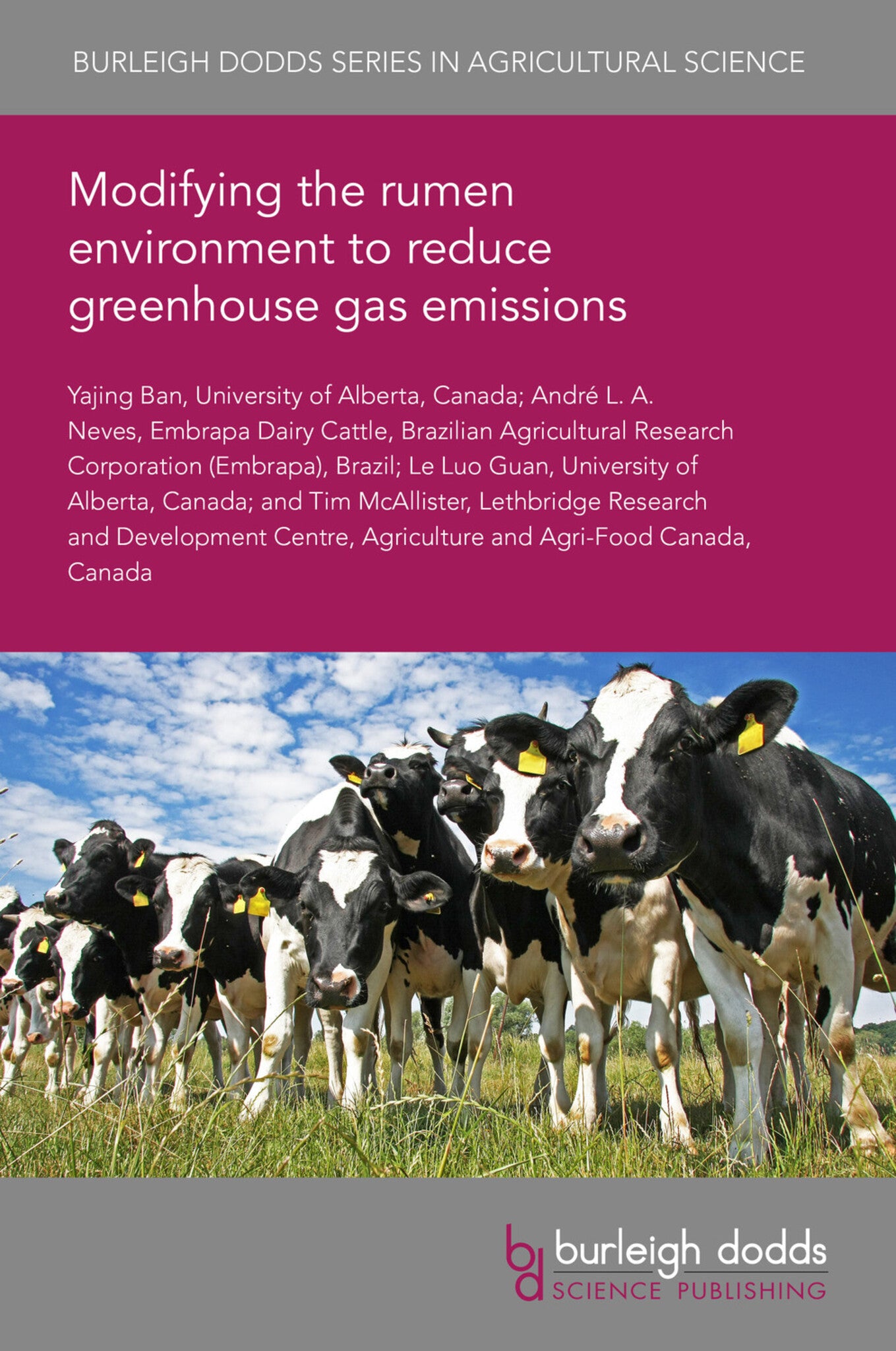We're sorry. An error has occurred
Please cancel or retry.
Modifying the rumen environment to reduce greenhouse gas emissions
Regular price
£25.00
Sale price
£25.00
Regular price
£0.00
Unit price
/
per
Sale
Sold out
Re-stocking soon
Ruminants were among the first domesticated animals and have been providing food, leather, wool, draft and by-products to humanity for at least 10,000 years. However, rumen methanogens reduce CO2 t...
Read More

Some error occured while loading the Quick View. Please close the Quick View and try reloading the page.
Couldn't load pickup availability
- Format:
-
19 July 2021

Ruminants were among the first domesticated animals and have been providing food, leather, wool, draft and by-products to humanity for at least 10,000 years. However, rumen methanogens reduce CO2 to CH4 in association with other rumen microbes that generate substrates for methanogenesis. Consequently, other rumen microbiota can directly and indirectly impact the abundance and activity of methanogens. Enteric methanogenesis from ruminants accounts for approximately 6% of total anthropogenic greenhouse gases emissions and can represent from 2 to12% of the host’s gross energy intake. A myriad of strategies to mitigate CH4 emissions have been investigated, but few have been adopted by industry. This chapter reviews rumen- and feed-associated factors affecting CH4 production and outlines the challenges associated with achieving a reduction in enteric CH4 emissions. The pros and cons of these strategies are discussed in an attempt to define the best approaches to mitigate CH4 emissions from ruminant production systems.

Price: £25.00
Publisher: Burleigh Dodds Science Publishing
Imprint: Burleigh Dodds Science Publishing
Series: Burleigh Dodds Series in Agricultural Science
Publication Date:
19 July 2021
ISBN: 9781801462457
Format: eBook
BISACs:
TECHNOLOGY & ENGINEERING / Agriculture / Sustainable Agriculture, Dairy farming, TECHNOLOGY & ENGINEERING / Agriculture / Animal Husbandry, SCIENCE / Global Warming & Climate Change, Sustainable agriculture, Climate change

1 Introduction 2 Greenhouse gas production and the role of the rumen microbiome 3 Factors influencing methane production in ruminants 4 Modifying the rumen environment to reduce methane emissions 5 Conclusion 6 Where to look for further information 7 References



